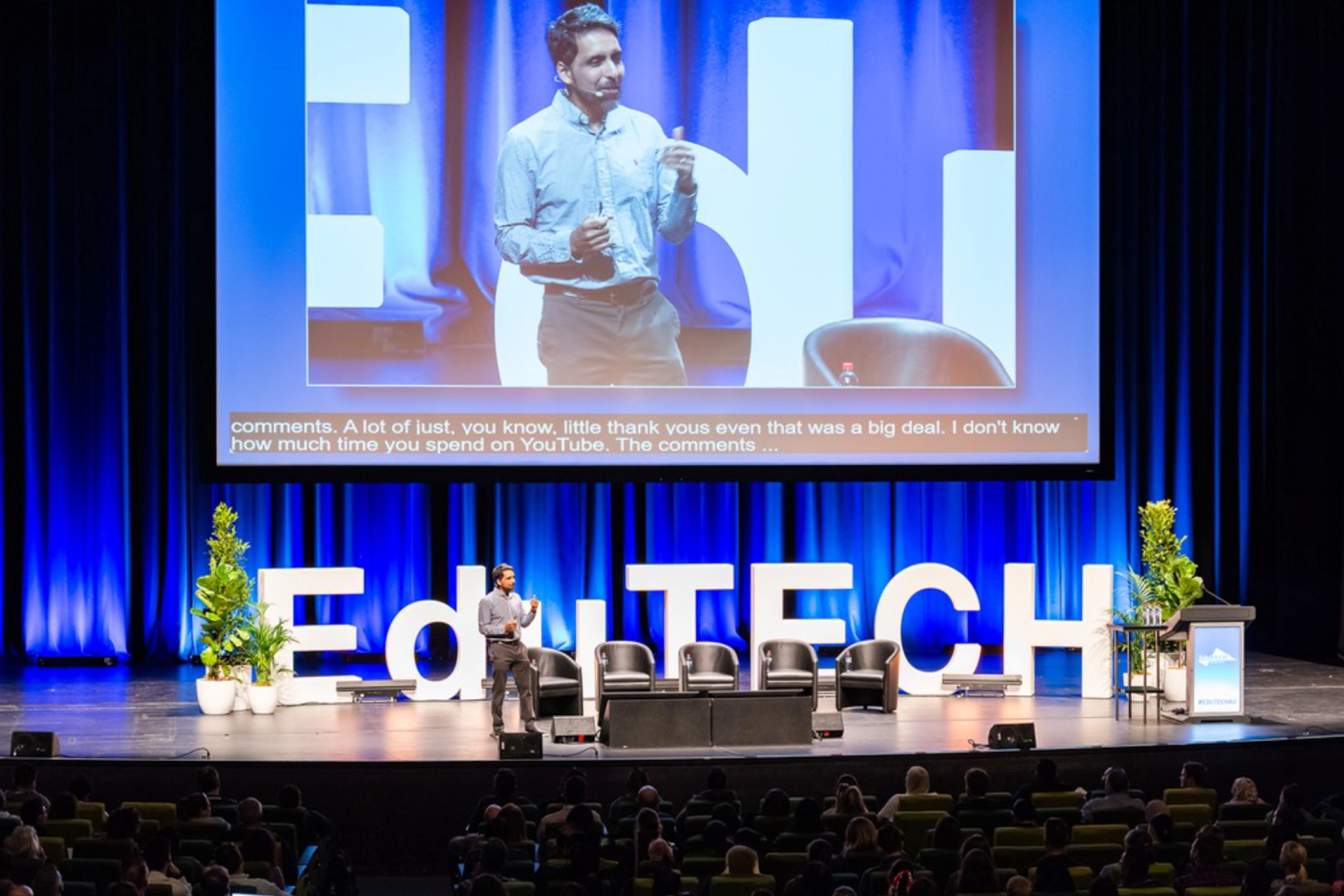Image source: EduTech instagram 'au_edutech'.
Education is in the midst of an emerging revolution, but are schools ready for it? For me, this year’s EduTech conference revealed a striking gap between where school systems stand today and the bold vision some educators, CIOs and tech vendors have for tomorrow. The conversation has clearly shifted from excitement (and fear) about what technology could do to the hard reality of what it’s actually doing in classrooms and the office. As someone outside the traditional roles of educator, CIO, or vendor, I was keen to understand the tensions between people, systems and technologies that either accelerate or impede meaningful change.
Bridging the gap
Early adopters of emerging technologies took the stage to share pilots and progress — AI tutors, chatbots for student support, tools that provide instant feedback and grading, and even e-sports programs.
These innovators are pushing boundaries, but the excitement was tempered by a message of caution from many speakers. With AI slipping into the "Trough of Disillusionment" on Gartner’s latest Education Hype Cycle, concerns about its maturity and schools’ readiness to adopt it were a recurring theme at the conference.
The worry? Over-reliance on technology might “dumb us down,” disconnecting educators from the learning process they’re meant to guide. CIOs also sounded alarms about the underlying infrastructure and privacy challenges that must be addressed before schools can embrace AI at scale.
Stepping back from it all, the gap between these perspectives was clear. Early adopters thrive on the potential for transformative change — willing to take risks to pioneer new approaches. The next stage of adoption (often called the early majority) are pragmatists. They won’t touch technology until it’s a proven, low-risk solution that drives productivity without disruption.
What emerged at the conference was a sense that a handful of well-defined use cases —like personalised feedback, AI-driven tutoring to enhance problem-solving, and tools that accelerate planning — are beginning to lay the groundwork for emerging technologies’ broader adoption.
Yet, for all the intriguing pilots I saw, none had yet been codified into scalable, repeatable solutions. The real breakthrough will come when these trials evolve into practices that a broader audience can confidently adopt.
The critical foundations of data privacy and governance
As schools handle growing compliance, administrative, and student data alongside rapid technological advances, cyber threats and concerns about data privacy and governance also rise.
Independent and private schools are beginning to develop their own AI tools, prompting serious questions about who controls student data and how it's managed.
Several speakers emphasised the importance of airtight data privacy protocols, referring to student data as the “crown jewels” that must remain securely within school networks, far from the reach of external AI systems used for training purposes.
Navigating privacy compliance and legislation is more crucial than ever. The challenge is to balance the drive for innovation with the need for rigorous governance. Many conference attendees pushed for clearer guidelines and more stringent approval processes for AI vendors to ensure that data is handled securely and responsibly.
There is a clear need for better data infrastructure, and strong data governance frameworks become increasingly urgent. Without them, the very privacy risks we aim to mitigate could overshadow the potential benefits technology now offers in education.
Technology’s surprising impact on mental Health and wellbeing
One unexpected benefit that using new technologies brings to education is its positive impact on student mental health and wellbeing. Tools that offer immediate feedback and approximate grades improve academic performance and reduce anxiety around assignments. By giving students real-time insights into their progress, these tools provide a sense of control over their learning journey, shifting the focus from fear of failure to personal growth and achievement.
Esports programs gained attention for their role in re-engaging students who might otherwise feel disconnected from traditional education.
In these programs, students compete in organised video gaming tournaments, developing teamwork, strategy, and leadership skills. More than just gaming, esports foster social connections and problem-solving abilities, offering students a space to thrive outside conventional classroom settings. By promoting autonomy, relatedness, and active engagement, these programs are improving mental health and helping students find renewed purpose in their learning — ultimately leading to better educational outcomes.
It was also worth noting that several startups at the conference targeted mental health and wellbeing challenges for schools.
Successfully codifying change
One of the biggest barriers to adopting new technologies in schools is that it’s not as simple as picking up a new tool. Technology's shift towards autonomy, personalisation, and deeper engagement requires a change in how learning is facilitated.
Educators, leaders, and school systems need the safety, time, and flexibility to trial these innovations and reflect on the outcomes. Structured approaches that embrace experimentation, safe failures, and iterative learning are critical, yet high demands and rigid systems are not designed to support this kind of participatory change.
Despite these challenges, schools are still expected to adopt new technologies while balancing competing priorities and maintaining core functions. Several schools shared their digital strategies, but the real lesson was how they implemented these plans and navigated change. IT departments are shifting from an operational focus to a more product development mindset, and more broadly, schools are adopting organisational structures like accelerator networks to test and learn at a faster pace.
One glaring gap was the lack of focus on creating efficiencies for educators. Administrative burdens continue to weigh heavily on teachers, contributing to burnout and attrition. If technology is to truly enhance education, it must also free up educators to spend time in the space of the new stuff and to focus on the learning experience — preventing burnout and keeping them in the profession.
Charting a path forward
The EduTech conference made one thing clear: the future of education is being shaped by bold ideas and emerging technologies, but the journey to widespread adoption is complex. AI’s potential to revolutionise education was emphasised by Khan Academy’s CEO, Sal Khan, who reminded us that AI can approximate the learning boost that one-on-one tutoring can provide. Studies show that AI can accelerate student learning by 30–40%, bringing significant gains where traditional approaches struggle.
While early adopters push the envelope with exciting pilots, the broader challenge lies in bridging the gap between innovation and practical, scalable solutions. For schools to truly reap the benefits of AI and other technologies, they need the time, space, and support to experiment and refine their approaches—without being held back by outdated systems and administrative burdens.
Ultimately, it’s not just about introducing new tools. It’s about reimagining how we teach, learn, and support students and educators. By focusing on thoughtful implementation, robust data governance, and the wellbeing of students and teachers, we can navigate this new era of education with purpose — and ensure that technology becomes a meaningful driver of positive change, not just the latest trend.





